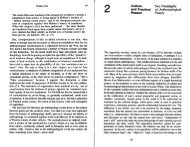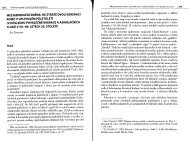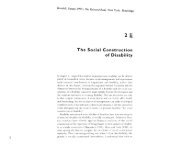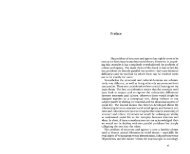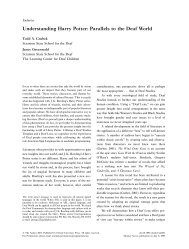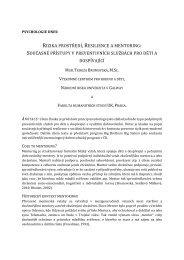Morphogenesis versus Structuration: On Combining ... - Moodle
Morphogenesis versus Structuration: On Combining ... - Moodle
Morphogenesis versus Structuration: On Combining ... - Moodle
Create successful ePaper yourself
Turn your PDF publications into a flip-book with our unique Google optimized e-Paper software.
Morphogenesas <strong>versus</strong> structuration 479<br />
His approving quotation from Eco gives the full flavour of insubstantiality,<br />
light years away from the examination of real structures.<br />
'Semiotics suggests a sort of molecular landscape in which what we<br />
are accustomed to recognize as everyday forms turn out to be the<br />
result of transitory chemical aggregations . . . revealing that where<br />
we thought we saw images there were only strategically arranged<br />
aggregations of black and white points, alternations of presence and<br />
absence'.78 To ground this view of codes in a 'broader theory of<br />
social practice' merely adds the indeterminacy problem. For practices<br />
themselves are seen as transformations of virtual orders of differences<br />
(of codes in time and space). Societal changes thus become indeterminate,<br />
they are like the shaking of a kaleidoscope-shifting patterns<br />
produced by the manipulation of oppositions by the population<br />
at large.<br />
Finally, given the mutuality of codes and practices (in which we<br />
cannot simply identify pre-existing codes which generate messages<br />
because messages also enter into the reconstitution of codes in the<br />
duality of structure), their interplay becomes analytically intractable,<br />
for how can we 'break-in' to the circuit (Analytical dualism is of<br />
course the device employed in morphogenesis to deal with its ongoing,<br />
circular systemic processes, but this is proscribed here.) In practice<br />
the answer is, by imputation, interpretation or interpolation-as was<br />
seen with the 'structural principles'-but this merely reinvokes<br />
Levi-Strauss's problem of the absent context of justification.<br />
The difference in sociological enterprise, as Giddens initially stated<br />
it, is illusory. The morphogenetic perspective is not only concerned<br />
with the identification and elaboration of social structures, it is<br />
preoccupied above all with the specification of the mechanisms<br />
involved-with the feedback 'process that contains both negative<br />
(stabilizing or rigidifying) elements and positive (structure-elaborating,<br />
or increasingly disorganizing) features'.79 This is the way in which<br />
institutional structures help to create and recreate themselves in an<br />
ongoing developmental process. The ultimate difference is not one of<br />
enterprise, for an adequate theory of stabilization, disorganization<br />
and elaboration obviously incorporates the instantiation of structure,<br />
just as an adequate theory of instantiation must specify the conditions<br />
of morphostasis and morphogenesis. The theory of structuration<br />
remains incomplete because it provides an insufficient account of the<br />
mechanisms of stable replication <strong>versus</strong> the genesis of new social<br />
forms, and will do so while ever it resists unpacking these two<br />
connotations of 'reproduction'.<br />
Margaret S. Archer<br />
Department of Sociology<br />
University of Warwick



